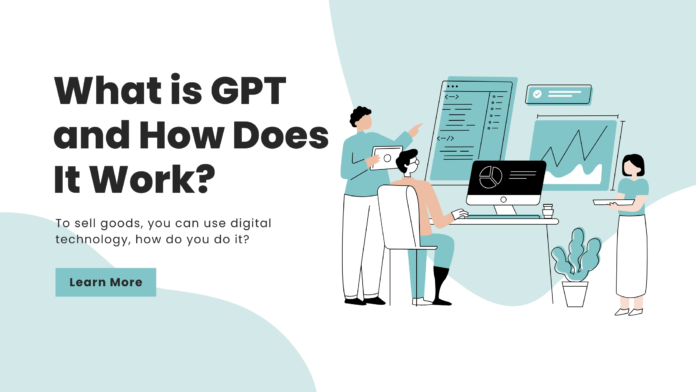GPT (Generative Pre-trained Transformer) is a powerful artificial intelligence model developed by OpenAI. It is designed to generate human-like text, answer questions, and assist in various natural language processing (NLP) tasks. But how exactly does GPT work, and why is it revolutionizing industries? In this article, we explore GPT’s mechanics, applications, and future developments.
What is GPT?
GPT stands for Generative Pre-trained Transformer. It is a deep learning model based on the Transformer architecture, which enables it to process and generate text efficiently.
Key Features of GPT:
- Pre-trained on vast datasets to understand language patterns.
- Uses deep learning algorithms to predict and generate text.
- Continuously improves through fine-tuning on specific tasks.
- Capable of generating human-like responses in real-time.
🔹 Related Article: How AI is Changing Content Creation
How GPT Works
GPT goes through multiple stages to become an efficient AI model:
1. Pre-training
During this stage, the model learns from large-scale datasets that include books, articles, and websites. It identifies language structures, grammar, and context without specific tasks in mind.
2. Fine-tuning
After pre-training, GPT is fine-tuned using supervised learning and reinforcement learning. This process ensures it generates accurate and context-aware responses for specific applications.
3. Generating Responses
When you input a prompt, GPT analyzes the text and predicts the most relevant response based on learned patterns. It considers:
- Context and meaning of previous words.
- Probability of next words using deep learning algorithms.
- Stylistic tone based on the input provided.
🔹 Recommended Read: Best AI Writing Tools in 2025
Applications of GPT
GPT is widely used across various industries for different purposes:
🔹 Content Creation
- Writing blog posts, articles, and essays.
- Generating marketing copy and ad content.
- Assisting in creative writing.
🔹 Customer Support
- Automating chatbots for instant responses.
- Enhancing customer service with AI-driven solutions.
🔹 Programming Assistance
- Writing and debugging code.
- Generating explanations for complex programming queries.
🔹 Education & Research
- Summarizing academic papers.
- Answering student queries with AI-powered tutors.
Benefits of GPT
✅ Saves time – Automates tasks like content generation and customer support.
✅ Enhances creativity – Helps writers brainstorm and create engaging content.
✅ Increases efficiency – Provides instant responses and improves workflow.
✅ Scalable for businesses – Assists in automating repetitive tasks.
🔹 Further Reading: How AI is Revolutionizing Industries
Limitations & Ethical Concerns
While GPT is highly advanced, it has some limitations:
- Can generate biased content due to training data limitations.
- Not 100% accurate – May produce misleading or incorrect information.
- Lack of deep reasoning – Cannot fully comprehend complex human emotions and logic.
🔹 Learn More: Ethical Challenges in AI
Future of GPT & AI
AI models like GPT continue to evolve, improving their capabilities and applications. Future developments may focus on:
- Better ethical AI practices to reduce biases.
- Enhanced contextual understanding for more accurate responses.
- Integration with other AI technologies for seamless automation.
Conclusion
GPT is a groundbreaking AI model that has transformed the way we interact with technology. From content creation to customer support, its applications are vast and continue to grow. As AI advances, GPT will play an even bigger role in shaping the future of automation, creativity, and communication.


